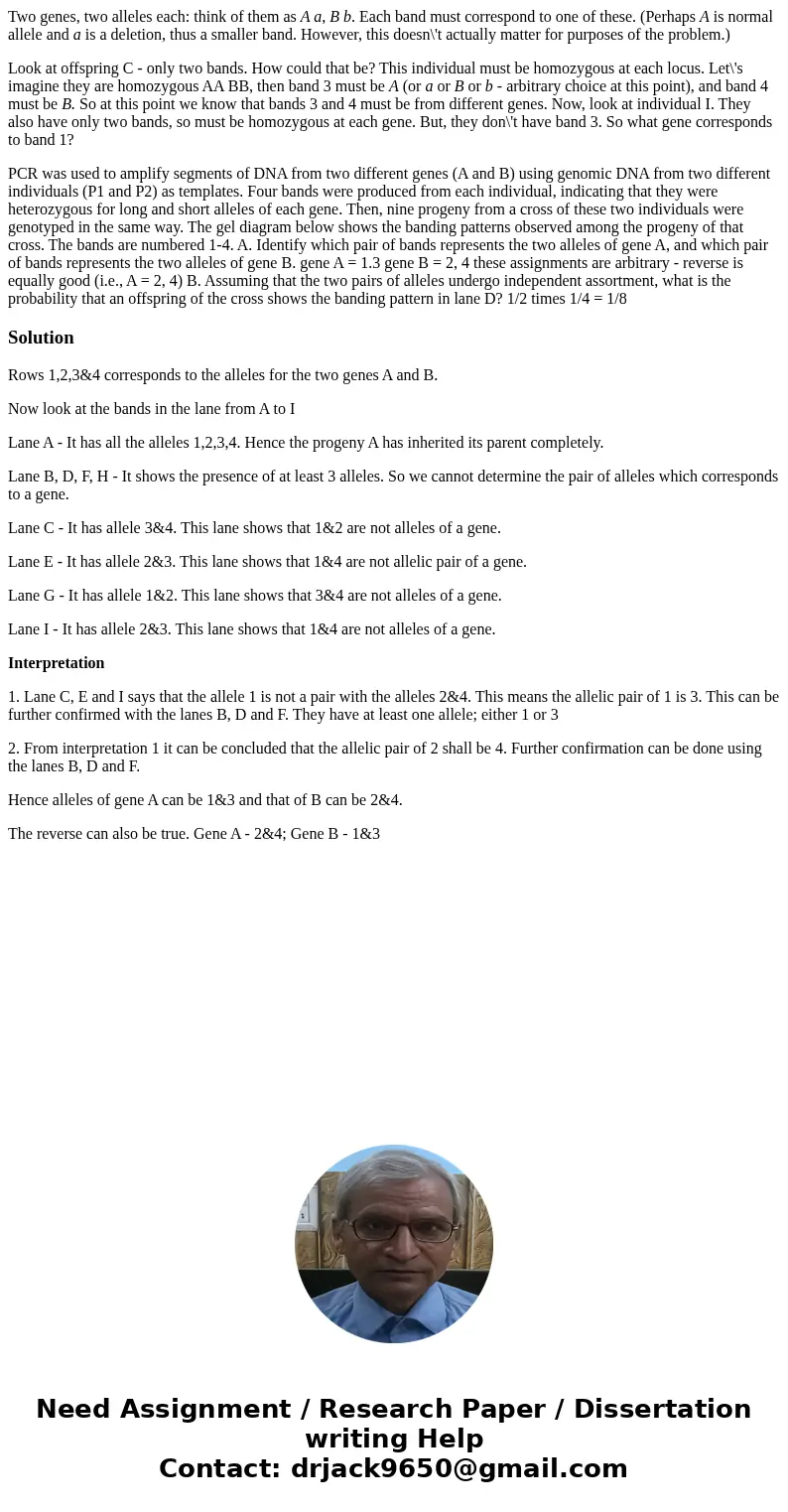Two genes two alleles each think of them as A a B b Each ban
Two genes, two alleles each: think of them as A a, B b. Each band must correspond to one of these. (Perhaps A is normal allele and a is a deletion, thus a smaller band. However, this doesn\'t actually matter for purposes of the problem.)
Look at offspring C - only two bands. How could that be? This individual must be homozygous at each locus. Let\'s imagine they are homozygous AA BB, then band 3 must be A (or a or B or b - arbitrary choice at this point), and band 4 must be B. So at this point we know that bands 3 and 4 must be from different genes. Now, look at individual I. They also have only two bands, so must be homozygous at each gene. But, they don\'t have band 3. So what gene corresponds to band 1?
PCR was used to amplify segments of DNA from two different genes (A and B) using genomic DNA from two different individuals (P1 and P2) as templates. Four bands were produced from each individual, indicating that they were heterozygous for long and short alleles of each gene. Then, nine progeny from a cross of these two individuals were genotyped in the same way. The gel diagram below shows the banding patterns observed among the progeny of that cross. The bands are numbered 1-4. A. Identify which pair of bands represents the two alleles of gene A, and which pair of bands represents the two alleles of gene B. gene A = 1.3 gene B = 2, 4 these assignments are arbitrary - reverse is equally good (i.e., A = 2, 4) B. Assuming that the two pairs of alleles undergo independent assortment, what is the probability that an offspring of the cross shows the banding pattern in lane D? 1/2 times 1/4 = 1/8Solution
Rows 1,2,3&4 corresponds to the alleles for the two genes A and B.
Now look at the bands in the lane from A to I
Lane A - It has all the alleles 1,2,3,4. Hence the progeny A has inherited its parent completely.
Lane B, D, F, H - It shows the presence of at least 3 alleles. So we cannot determine the pair of alleles which corresponds to a gene.
Lane C - It has allele 3&4. This lane shows that 1&2 are not alleles of a gene.
Lane E - It has allele 2&3. This lane shows that 1&4 are not allelic pair of a gene.
Lane G - It has allele 1&2. This lane shows that 3&4 are not alleles of a gene.
Lane I - It has allele 2&3. This lane shows that 1&4 are not alleles of a gene.
Interpretation
1. Lane C, E and I says that the allele 1 is not a pair with the alleles 2&4. This means the allelic pair of 1 is 3. This can be further confirmed with the lanes B, D and F. They have at least one allele; either 1 or 3
2. From interpretation 1 it can be concluded that the allelic pair of 2 shall be 4. Further confirmation can be done using the lanes B, D and F.
Hence alleles of gene A can be 1&3 and that of B can be 2&4.
The reverse can also be true. Gene A - 2&4; Gene B - 1&3

 Homework Sourse
Homework Sourse